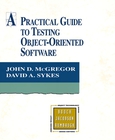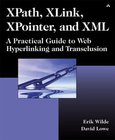A Practical Guide to Content Delivery Networks
2nd Edition

Book Details:
| Publisher: | CRC Press |
| Series: | CRC Press , Practical |
| Author: | Gilbert Held |
| Edition: | 2 |
| ISBN-10: | 1439835888 |
| ISBN-13: | 9781439835883 |
| Pages: | 304 |
| Published: | Oct 12 2010 |
| Posted: | Nov 19 2014 |
| Language: | English |
| Book format: | |
| Book size: | 6.07 MB |
Book Description:
Following in the tradition of its popular predecessor, A Practical Guide to Content Delivery Networks, Second Edition offers an accessible and organized approach to implementing networks capable of handling the increasing data requirements of today'salways on mobile society. Describing how content delivery networks (CDN) function, it provides an understanding of Web architecture, as well as an overview of the TCP/IP protocol suite. The book reports on the development of the technologies that have evolved over the past decade as distribution mechanisms for various types of Web content. Using a structural and visual approach, it provides step-by-step guidance through the process of setting up a scalable CDN. Supplies a clear understanding of the framework and individual layers of design, including caching and load balancing Describes the terminology, tactics, and potential problems when implementing a CDN Examines cost-effective ways to load balance web service layers Explains how application servers connect to databases and how systems will scale as volume increases Illustrates the impact of video on data storage and delivery, as well as the need for data compression Covers Flash and the emerging HTML5 standard for video Highlighting the advantages and disadvantages associated with these types of networks, the book explains how to use the networks within the Internet operated by various ISPs as mechanisms for effectively delivering Web server based information. It emphasizes a best-of-breed approach to building your network to allow for an effective CDN to be built on practically any budget. To help you get started, this vendor-neutral reference explains how to code Web pages to optimize the delivery of various types of media. It also includes examples of successful approaches, from outsourcing to do it yourself.
Download Link:
Related Books:
Spatial Database for GPS Wildlife Tracking Data
A Practical Guide to Creating a Data Management System with PostgreSQL/PostGIS and R
This book guides animal ecologists, biologists and wildlife and data managers through a step-by-step procedure to build their own advanced software platforms to manage and process wildlife tracking data. This unique, problem-solving-oriented guide focuses on how to extract the most from GPS animal tracking data, while preventing error propagation and optimizing analysis performance. Based on the open source PostgreSQL/PostGIS spatial database, the software platform will allow researchers and managers to integrate and harmonize GPS tracking data together with animal characteristics, environmental data sets, including remote sensing image time series, and other bio-logged data, such as acceleration data. Moreover, the book shows how the powerful R stat...
A Practical Guide to Testing Object-Oriented Software
While developers and IT organizations increasingly acknowledge the importance of software testing, few know how to proceed -- especially when it comes to testing advanced object-oriented software systems. In this book, two leading O-O test researchers and consultants outline a start-to-finish methodology for testing: what to test, why to test it, how to test it, who should do the testing, and when. The book is organized around a task orientation, encompassing testing models; testing components, systems and subsystems; and planning for testing. The authors review the unique challenges associated with object-oriented software testing, offer practical insights into testing priorities, introduce each leading testing technique, and walk step-by-step throu...
XPath XLink XPointer and XML
A Practical Guide to Web Hyperlinking and Transclusion
Although the Web has grown continuously since its introduction in the early 90's, its technical foundations have remained relatively stable. However, the introduction of XML, along with a sequence of related technologies such as XPath, XLink, and XPointer, has heralded a substantial change in the way in which content can be managed. The most significant of these changes is with respect to the hypermedia functionality which is enabled by the new technologies of XLink and XPointer, especially richer linking and navigation models. This book will describe the new hypermedia features of the XLink/XPointer-enabled Web for developers who are interested in how these new concepts can be used for Web publishing. This book will offer its readers an overview of ...
2007 - 2021 © eBooks-IT.org


